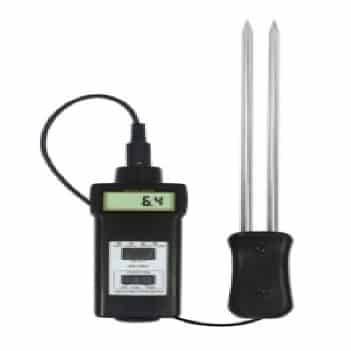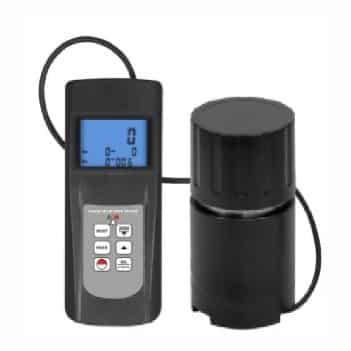At Samara Instruments, we know that the qualities like precision and effectiveness are absolutely critical in the field of agriculture. That’s why we have engineered a cutting-edge device called Grain Moisture Meter, it’s a perfect tool when it comes to measurement of the moisture levels in grains.
No matter whether you are a farmer, grain trader, or a preservation facility manager, our grain moisture meter is your most ideal partner in making sure that you achieve optimal grain quality and maximum profit in your business.
Why Choose Samara Instruments’ Grain Moisture Meter?
Key Features Of Our Grain Moisture Meter:
Take Your Grain Quality In Your Control
At Samara Instruments, we are fully dedicated to empower the farmers and other agriculture professionals with devices that revolutionize the business. Our Grain Moisture Meter is more than just a technical instrument – it’s your master key for the maintenance of crops, improved preservation practices and increase in your profits.
Don’t compromise with your grain quality. Invest in the Best. Invest with Us. Your Most Ideal Partner, Samara Instruments.
Visit our website or call us today to learn more about our product and order your Grain Moisture Meter. Let’s reach new heights in the business and achieve massive success together!
Samara Instruments – Accuracy, Trustability, Innovation.
Features
Application:- Used for fast and accurate measurement of moisture in the process of allotment, acquisition, storage, and machining of packed grains, feedstuff, and powder.
Features: –
Specifications
| Model No | SI - MC7821 | |||
|---|---|---|---|---|
| Model type | Affordable Model | |||
| Grains | 4 Kinds | |||
| Display | LCD | |||
| LED Indicator | - | |||
| Moisture | 8~20% | |||
| Temperature | -10~55°C | |||
| Resolution | 0.1 | |||
| Battery Indicator | Low Battery Indicator | |||
| Auto Power Off | - | |||
| Accuracy Moisture | ±0.6% / ±0.8% / ±1% | |||
| Accuracy Temparature | ±0.8°C | |||
| Operating Conditions Temperature | 0~50°C | |||
| Operating Conditions Humidity | < 80%RH | |||
| Power Supply | 4x1.5V AA Size (UM-3) Battery | |||
| Main Unit | 178x68x39mm | |||
| Cup Sensor | - | |||
| Long Rod Sensor | 368x44x25mm | |||
| Length of Rod | 250 mm | |||
| Diameter of Rod | 8 mm | |||
| Distance Between 2 Rods | 17 mm | |||
| Short Pin Sensor | - | |||
| Length of Pin | - | |||
| Diameter of Pin | - | |||
| Distance Between 2 Pins | - | |||
| Weight (Not Including Batteries) | 420 gm | |||
| Main Unit | ✔ | |||
| Rod Sensor | ✔ | |||
| Cup Sensor | - | |||
| Carrying Case | B01 | |||
| Manual | ✔ | |||
| Optional Accessories | - |

Features
Specifications
| Model No | SI - MC7825 G | ||||
|---|---|---|---|---|---|
| Model type | Functional Model | ||||
| Grains | 37 Kinds | ||||
| Display | LCD | ||||
| LED Indicator | Green LED Represents a Safe, Air-dry State Yellow LED Represents a Borderline State Red LED Represents a Damp State | ||||
| Moisture Range | 7~30% | ||||
| Temperature Range | - | ||||
| Resolution | 0.1 | ||||
| Battery Indicator | Low Battery Indicator | ||||
| Auto Power Off | ✔ | ||||
| Moisture Accuracy | ±(0.5%n+1) | ||||
| Temperature Accuracy | - | ||||
| Operating Conditions Temperature | 0~50°C | ||||
| Operating Conditions Humidity | < 90%RH | ||||
| Power Supply | 4x1.5V AAA Size (UM-4) Battery | ||||
| Cup Sensor Dimensions | 165x62x26mm | ||||
| Cup Sensor Main Unit | - | ||||
| Long Rod Sensor | 368x44x25mm | ||||
| Length of Rod | 250 mm | ||||
| Diameter of Rod | 8 mm | ||||
| Distance Between 2 Rods | 17 mm | ||||
| Short Pin Sensor | 157 x 44 x 44 mm | ||||
| Length of Pin | 10 mm | ||||
| Diameter of Pin | 0.7 mm | ||||
| Distance Between 2 Pins | 3.5 mm | ||||
| Weight (Not Including Batteries) | 320 g | ||||
| Standard | |||||
| Main Unit | ✔ | ||||
| Rod Sensor | ✔ | ||||
| Cup Sensor | - | ||||
| Carrying Case | B04 | ||||
| Manual | ✔ | ||||
| Optional Accessories | USB Cable with Software Bluetooth Adapter with Software Short Pin Sensor |

Features
Specifications
| Model No | SI - MC7825 G | |||
|---|---|---|---|---|
| Model type | Statistical Model | |||
| Grains | 37 Kinds | |||
| Display | LCD | |||
| LED Indicator | Green LED Represents a Safe, Air-dry State Yellow LED Represents a Borderline State Red LED Represents a Damp State | |||
| Moisture Range | 7~30% | |||
| Temperature Range | - | |||
| Resolution | 0.1 | |||
| Battery Indicator | Low Battery Indicator | |||
| Auto Power Off | ✔ | |||
| Moisture Accuracy | ±(0.5%n+1) | |||
| Temperature Accuracy | - | |||
| Operating Conditions Temperature | 0~50°C | |||
| Operating Conditions Humidity | < 90%RH | |||
| Power Supply | 4x1.5V AAA Size (UM-4) Battery | |||
| Main Unit Dimensions | 150x65x30 mm | |||
| Cup Sensor Dimensions | 115x66x66 mm | |||
| Long Rod Sensor | - | |||
| Length of Rod | - | |||
| Diameter of Rod | - | |||
| Distance Between 2 Rods | - | |||
| Short Pin Sensor | - | |||
| Length of Pin | - | |||
| Diameter of Pin | - | |||
| Distance Between 2 Pins | - | |||
| Weight (Not Including Batteries) | 520 g | |||
| Main Unit | ✔ | |||
| Rod Sensor | - | |||
| Cup Sensor | ✔ | |||
| Carrying Case | B04 | |||
| Manual | ✔ | |||
| Optional Accessories | USB Cable with Software Bluetooth Adapter with Software |


Samara Instruments is a trusted source for cutting-edge scientific equipment. We specialize in providing high-quality instruments and solutions for researchers, laboratories, and scientific professionals worldwide. With 8 years of industry experience, we are committed to delivering innovative products that empower scientific discovery and advancement.

At Samara Instruments, we know that the qualities like precision and effectiveness are absolutely critical in the field of agriculture. That's why we have engineered a cutting-edge device called Grain Moisture Meter, it's a perfect tool when it comes to measurement of the moisture levels in grains.
No matter whether you are a farmer, grain trader, or a preservation facility manager, our grain moisture meter is your most ideal partner in making sure that you achieve optimal grain quality and maximum profit in your business.
Why Choose Samara Instruments’ Grain Moisture Meter?
Key Features Of Our Grain Moisture Meter:
Take Your Grain Quality In Your Control
At Samara Instruments, we are fully dedicated to empower the farmers and other agriculture professionals with devices that revolutionize the business. Our Grain Moisture Meter is more than just a technical instrument – it's your master key for the maintenance of crops, improved preservation practices and increase in your profits.
Don't compromise with your grain quality. Invest in the Best. Invest with Us. Your Most Ideal Partner, Samara Instruments.
Visit our website or call us today to learn more about our product and order your Grain Moisture Meter. Let's reach new heights in the business and achieve massive success together!
Samara Instruments – Accuracy, Trustability, Innovation.
| Model No | SI - MC7821 | |||
|---|---|---|---|---|
| Model type | Affordable Model | |||
| Grains | 4 Kinds | |||
| Display | LCD | |||
| LED Indicator | - | |||
| Moisture | 8~20% | |||
| Temperature | -10~55°C | |||
| Resolution | 0.1 | |||
| Battery Indicator | Low Battery Indicator | |||
| Auto Power Off | - | |||
| Accuracy Moisture | ±0.6% / ±0.8% / ±1% | |||
| Accuracy Temparature | ±0.8°C | |||
| Operating Conditions Temperature | 0~50°C | |||
| Operating Conditions Humidity | < 80%RH | |||
| Power Supply | 4x1.5V AA Size (UM-3) Battery | |||
| Main Unit | 178x68x39mm | |||
| Cup Sensor | - | |||
| Long Rod Sensor | 368x44x25mm | |||
| Length of Rod | 250 mm | |||
| Diameter of Rod | 8 mm | |||
| Distance Between 2 Rods | 17 mm | |||
| Short Pin Sensor | - | |||
| Length of Pin | - | |||
| Diameter of Pin | - | |||
| Distance Between 2 Pins | - | |||
| Weight (Not Including Batteries) | 420 gm | |||
| Main Unit | ✔ | |||
| Rod Sensor | ✔ | |||
| Cup Sensor | - | |||
| Carrying Case | B01 | |||
| Manual | ✔ | |||
| Optional Accessories | - |